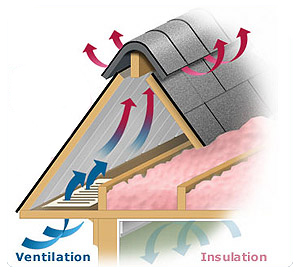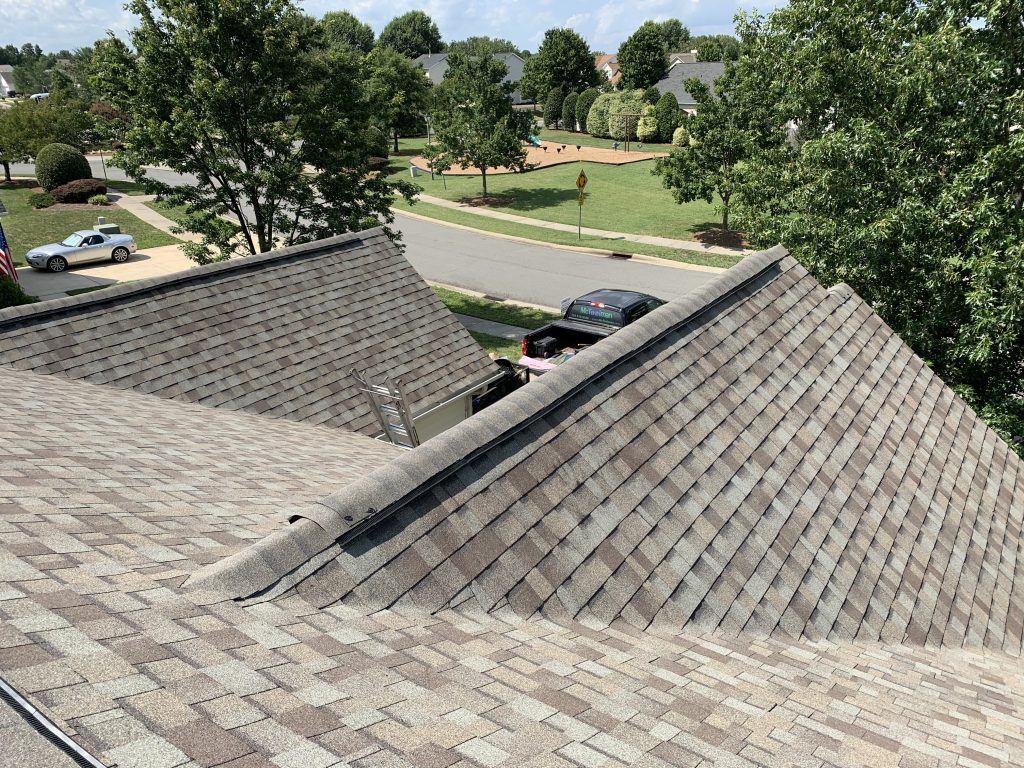Roof ventilation is just as important as the roof itself. Especially with the various types of weather and temperatures your Charlotte home experiences.
When you own a home, one thing you learn is the importance of ventilation. If your kitchen isn’t properly vented or is non-existent, the smells from each nights dinner can linger for days. If your bathroom ventilation is inadequate, you’ll wage never-ending war against mildew growth. And if your roof isn’t vented, you’ll face a host of problems, on both the inside and the outside of your house.
Fortunately, ventilation problems around the house aren’t too difficult for an experienced contractor to correct.
How Attic Ventilation Works
Effective ventilation in an un-finished attic space typically includes intake vents down low along the soffits, along with exhaust vents up high along the peak. This allows for a continuous flow of air through the attic space. Cooler air is drawn in through the soffit vents, the warm, humid air rises in the attic and then exits through the exhaust vents along the peak.

Why Attic Ventilation Is Important For Your Roof & Home
Proper ventilation minimizes the negative effects of trapped hot air throughout the year.
In The Summer
- Heat builds up in the attic, overheating the roof decking and the ceiling in your home.
- Roofing materials and shingles age more quickly due to prolonged exposure to excessive heat.
- Heat from the attic radiants to the interior of the house thereby forcing the air conditioning system to work harder.
In The Winter
- Warm, moist air from the house seeps into the attic.
- Condensation develops in the attic and on the roof’s interior structural elements, which can cause wood rot and deterioration as well as mold and mildew growth on attic insulation
- Warm air causes snow on the roof to melt and refreeze at the eaves in the form of ice dams.
An adequately ventilated roof and attic helps extend the life span of two of the most expensive systems in your house: the HVAC system and your roof. It also helps maintain good indoor air quality, since stuffy, humid air is continuously moved through the house into the outdoors.
Spotting Signs of Improper Roof Ventilation
An inadequate attic ventilation system can cause a variety of problems that manifest themselves in different ways.
Here are some subtle and some not-so-subtle things to watch out for:
- An unexplained uptick in your household heating and cooling bills, which can happen if your attic insulation gets wet and loses its effectiveness
- More frequent HVAC repairs as heating and cooling equipment that’s under a heavier workload can become more prone to breakdowns or even premature failure
- A noticeable buildup of ice along your roof edge during the winter months
- A wavy or rippled appearance to your home’s roofline and shingles caused by warping of moisture-damaged decking underneath.
- Rust and corrosion on metal materials in the attic. Such as nail heads, electrical boxes, light fixtures, and HVAC system components.
- Dampness, water stains or frost on the attic side of your roof sheathing. Or any evidence of deterioration and decay of the roof’s structural supports
- An increase in discomforting allergy symptoms or respiratory illnesses among your family members, which may be related to the spread of fungi spores through your indoor air supply from mold growth in your attic.
Types of Roof Ventilation
- Ridge Vent
- Power Fan
- Solar Fan
- Static Vent
- Wind Turbine
- Gable Vent

Contact McToolman today to schedule a free ventilation analysis.
